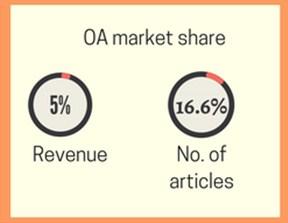
4 minute read
Recent Developments in OA
UNDERSTANDING COPYRIGHT LICENSING
Creative Commons
Advertisement
For those involved in research and academic publishing, licensing policies are necessary to ensure that permission to use one’s work is clear. Open licenses ensure that the copyright holder is clearly identified and it promotes open access publishing, as this is particularly important in allowing others to use the published work. Open Access Scholarly Publishers Association advocates the use of such liberal licenses and works in tandem with OA publishers. Commonly used public copyright licenses are those offered by Creative Commons (CC). CC offers some sound suggestions to both licensors and licensees. For example, licensors should consider that the license is irrevocable, that the content is appropriate for the public, and that the material is not already in the public domain. Licensees must fully understand the terms of the license and know their obligations under that particular license. Remember, all CC licenses require attribution. Overall, these licenses still provide authors with protection, but also allow use under certain restrictions. This helps promote the free exchange of information and encourages research [18]. For the most part, when an article is published in a journal, the work is automatically copyrighted by the publishers and they can grant user licenses as they see fit. Open access is a hot topic and more publishers are now under pressure to provide access to such research work for free. OASPA recognizes the need for more standardized licenses and attribution practices; therefore, any publisher that belongs to OASPA must agree to use licenses that “encourage the reuse and distribution of content.” OASPA also requires that its members use CC licenses, and sometimes people confuse attribution with citation; however, they are not synonymous. The former is a legal requirement for a specific license, while the latter is a practice dictated by specific disciplines [18].
UNDERSTANDING COPYRIGHT LICENSING
Types of Licenses
Researchers are currently faced with the challenge of understanding the different licenses that are available. Below are some of the common types of licenses that can be used [19]. Prepared licenses: Often a researcher’s department or institution already has a license prepared that researchers can apply to their data. These prepared licenses can be both at the institutional level and as public domain, such as in the case of genome data. Ultimately, when these are available to a researcher there is less work involved in obtaining the data license. Bespoke licenses: These are custom licenses that are not easy to prepare. These are not commonly used, but when there is a significant commercial value associated with the data or the researcher needs to clarify his or her responsibilities and those of the re-users with respect to the data, then a custom license in often necessary. Standard licenses: These are the most commonly used licenses, as most research projects are better served by using one of the standard licenses. For instance, Creative Commons or Open Data Commons license. Authors who hold a CC license do waive certain rights, but revisions to these copyrights, such as modifications or commercial uses of works, are clearly stipulated. Anyone can use public licenses; however, there are some international restrictions. For example, Creative Commons Developing Nations License limits licensees to those individuals and companies who live in developing nations. There are also public licenses for specific disciplines. For example, the Free Software Foundation provides licensing for software developers. The Open Source Initiative provides licenses that “allow software to be freely used, modified, and shared,” and the Open Knowledge Foundation provides licenses for specific types of data [18].


UNDERSTANDING COPYRIGHT LICENSING

Types of Creative Commons Licenses

RECENT DEVELOPMENTS IN OA
Global updates in OA movement
In December 2015, OA2020 roadmap was prepared by Max Planck Digital Library towards “Building on the Berlin Declaration on Open Access to Knowledge in the Sciences and Humanities and on the progress that has been achieved so far, we are pursuing the large-scale implementation of free online access to, and largely unrestricted use and re -use of scholarly research articles [20]. In another milestone, under Horizon 2020 program (EU's Research & Innovation funding programme for 2014-2020), Commission pledged to make open access to scientific publications with following objectives [21]: articles will either immediately be made accessible online by the publisher (Gold OA) - upfront publication costs can be eligible for reimbursement by the European Commission; or researchers will make their articles available through an open access repository no later than six months (12 months for articles in the fields of social sciences and humanities) after publication ('Green' open access). In addition, with the adoption of the Digital Single Markets strategy, the Commission announced the launch of a cloud for research data – the ‘research open science cloud (HLEG EOSC)' that will offer 1.7 million researchers and 70 million STM researchers and professionals a place to store, share and re-use data across disciplines [22]. In February 2017 a report titled, “Towards a Sustainable and Competitive Open Access Market in Europe” was released as part of the OpenAIRE 2020 project, a partnership comprising of 50 European Union countries. The study addressed the economic factors that contribute to the OA market and evaluated ongoing competition and how that competition affects new OA policies. Six steps were recommended to “enable a competitive and sustainable open access market in Europe” based the current roadblocks [23].
Author incentives: Create author incentives and remove disincentives.
Publisher incentives: Provide subscription publishers with a viable transition route.

Competition: Improve transparency. Pluralism: Support diverse approaches. Infrastructure: Develop a robust infrastructure. Monitoring: Ensure policy compliance.






